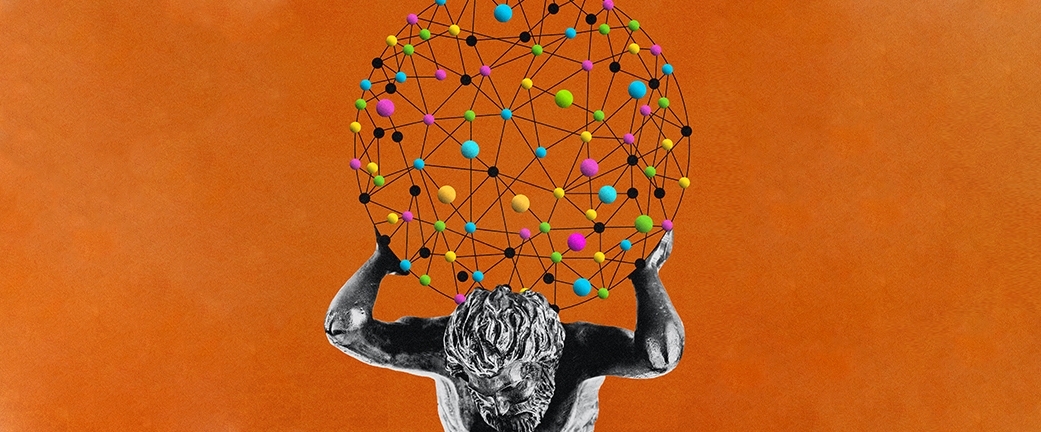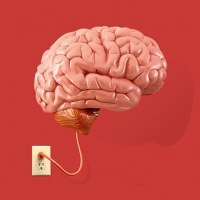
Jeremy Heimans discusses social connections and dynamics in our brave, new hyperconnected world
The power of the crowd gives us unprecedented opportunities to shift the status quo. Social movements like #MeToo and the gun violence prevention campaign #NeverAgain suggest that with more people at the table we can face society’s darkest problems in new ways.
Jeremy Heimans is the co-founder and CEO of Purpose, an organization that helps build human-centered digital movements. He is also the co-author of New Power, which outlines the fall of Old Power values like competition and top-down authority to the New Power values of collaboration, transparency, and self-governance. All of us can harness New Power, according to Heimans, but its impact depends on how we use it.
Aidan Young: What can everyday people—or people as global citizens—do to thrive in a New Power environment?
Jeremy Heimans: Old Power and New Power are two different mindsets and different sets of skills. Most people who have succeeded and gotten to positions of authority in institutions have learned the Old Power skillset. You’ve learned to hoard stuff that you have, that you know, and that you control that others don’t. You’ve learned to rely on dynamics that are closed. If you want to thrive on a New Power level, you need to learn how to use power not as currency but as current, harnessing this energy that you cannot hoard or control but that nonetheless can be incredibly powerful.
The book New Power starts with a comparison between Harvey Weinstein’s Old Power and the New Power of #MeToo. People are not running #MeToo, they are not controlling that energy, but they are finding ways to use it in constructive ways to make change and to achieve their goal. With New Power, it’s about creating models in which the energy comes not from what is downloaded but from what is uploaded, from systems that are open and not closed, from models that are peer-driven and not leader-driven.
More and more people are turning away from organized religion and embracing more open-ended terms like spiritual and practices like meditation. How does this shift relate to New Power?
I think you could argue that with more personal meditative practices there’s a macro objective, which is partly about moving people away from the traditional conceptions of power: insecurity, hoarding power out of that insecurity, guarding it, seeing the world as a zero-sum game. The underlying philosophy that informs mindfulness meditative practices is about a noncompetitive orientation to the world, not seeing life as zero sum. This mode is about sharing and a deeper transparency and honesty in the way you approach the world. I think the argument is that if everybody meditated you would probably have different power dynamics in the world than if everybody was spending all of their time getting worked up on Twitter.
What is art’s relationship to New Power?
The question is: In a world in which everybody is now much more able to produce art, where everybody is a creator in some form, expressing themselves creatively in a variety of mediums, what implications does that have for the future of art? Does that have implications for who emerges to become a major artist when you don’t have the same gatekeeper model? How does art get democratized? Can more people break through? Do you get art that is, itself, more participatory? What would a world look like in which art is being produced collaboratively by many people? This is a form that we’re seeing appear now in different ways.
Many people believe that power corrupts, particularly Old Power. Does New Power have the same potential to corrupt those who harness it?
he people who figure out how to harness the energy of these connected crowds don’t necessarily have the motives that we do. There is an archetype of what we call a co-opter. Facebook is a great example. Facebook is a model that relies heavily on New Power dynamics, but it’s clearly, at some level, co-opting our participation in order to consolidate power. We need to reimagine systems and models to minimize the co-opter dynamics. In the tech realm, we talk a lot about models that allow the users of platforms to actually co-own the platform, because that minimizes co-optation risk.
Where does compassion fit into a New Power world?
I think that a precursor of compassion is empathy and the experience of getting into another’s shoes, working with and collaborating with people that might be different than you. There are definitely ways that New Power supercharges those dynamics, because in order to be effective in that environment, you have to learn how to work with people, not just how to compete with them.
I do think you see compassion manifest in some of these New Power movements. The Refugees Welcome movement, which began in 2015 after Alan Kurdi’s lifeless body washed up ashore, created a wave of compassion for refugees. People started showing up in train stations in Munich, welcoming refugees that were coming into Germany. It led to major commitment by European governments to resettle refugees, most notably Angela Merkel’s commitment to resettle a million refugees. That was New Power supercharging compassion.
Now, New Power also superpowers hate and division. So a big question for the future is who is going to mobilize this. For those who value compassion, openness, pluralism, and democracy, we’ve got to use this new tool, because if we don’t, the other side will.
Is technology the only catalyst for New Power? What would happen if social media disappeared tomorrow?
There is no doubt that New Power is enabled by the fact that we’re now all ubiquitously, constantly, deeply connected to each other. That said, I think that what we focus on in our work at Purpose is not the technology, but the way that this connectivity is changing people, their behavior, their expectations around participation, their relationship to institutions, their sense of agency. I think what’s really interesting is those things have changed in a world that is so connected. If social media disappeared, people would find other ways to do that, and you see manifestations of New Power that go far beyond the social media platforms.
So our values have already shifted to the point that we would find another way to continue cultivating New Power?
Yeah. I think that people will not go back to a posture in which they have just a compliant-based relationship with society and institutions. They want to do more. They want to participate.
What are you currently working on at Purpose that might be of interest to our readers?
We are doing a lot of work that is essentially about how to use New Power to engender these values of compassion. As an example, we launched a campaign called Refugees Welcome to Dinner, a dinner series designed to bring refugees and non-refugees around a table to break bread and break barriers. We created a model that allows people to participate and welcome newly resettled refugees in their community. It’s all about creating connections and compassion using New Power dynamics, allowing people to self-organize, to find each other online, connect in real life.
About the Contributors
Jeremy Heimans is the co-founder and CEO of Purpose, a global organization headquartered in New York that builds and supports movements for a more open, just, and habitable world. Purpose has advised organizations such as the Bill and Melinda Gates Foundation, Google and UNICEF. He is co-founder of GetUp!, an Australian political organization with more members than all of Australia’s political parties combined, and Avaaz, the world’s largest online citizens’ movement, now with nearly 50 million members worldwide.
Aidan Young is assistant manager of digital engagement at the Rubin Museum of Art.




__small.jpg)

*sigh* Darwin.